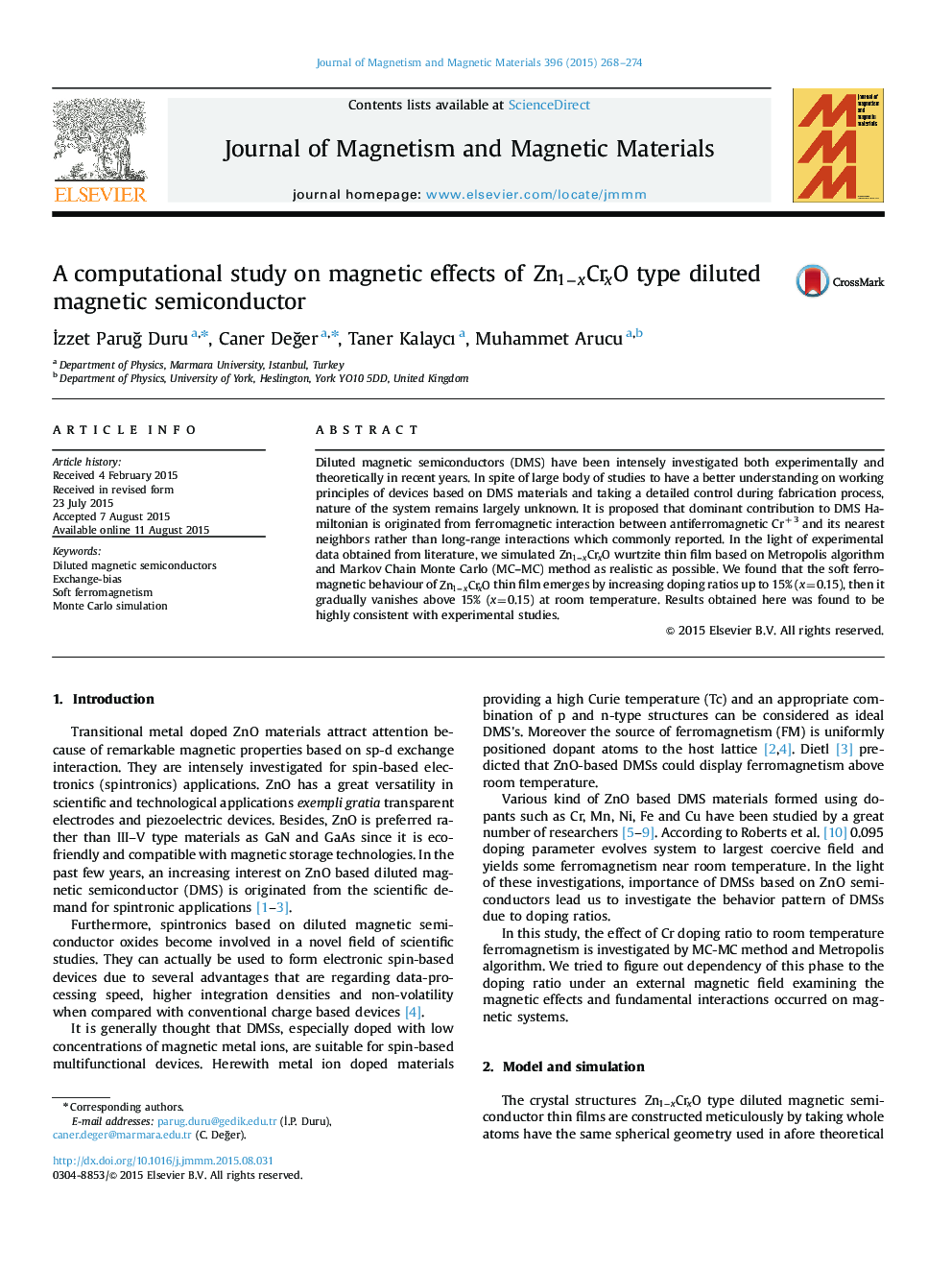| کد مقاله | کد نشریه | سال انتشار | مقاله انگلیسی | نسخه تمام متن |
|---|---|---|---|---|
| 1798584 | 1524825 | 2015 | 7 صفحه PDF | دانلود رایگان |

• Zn1−x CrxO DMS has modeled as a thin film on a glass like substrate.
• FM emerges by increasing ratios up to x=0.15; then it gradually vanishes above x=0.15.
• Exchange splitting revealed the strength of exchange interaction via band structure.
• FM is originated from exchange interaction rather than long-range interactions.
Diluted magnetic semiconductors (DMS) have been intensely investigated both experimentally and theoretically in recent years. In spite of large body of studies to have a better understanding on working principles of devices based on DMS materials and taking a detailed control during fabrication process, nature of the system remains largely unknown. It is proposed that dominant contribution to DMS Hamiltonian is originated from ferromagnetic interaction between antiferromagnetic Cr+3 and its nearest neighbors rather than long-range interactions which commonly reported. In the light of experimental data obtained from literature, we simulated Zn1−xCrxOZn1−xCrxO wurtzite thin film based on Metropolis algorithm and Markov Chain Monte Carlo (MC–MC) method as realistic as possible. We found that the soft ferromagnetic behaviour of Zn1−xCrxOZn1−xCrxO thin film emerges by increasing doping ratios up to 15% (x=0.15), then it gradually vanishes above 15% (x=0.15) at room temperature. Results obtained here was found to be highly consistent with experimental studies.
Figure optionsDownload as PowerPoint slide
Journal: Journal of Magnetism and Magnetic Materials - Volume 396, 15 December 2015, Pages 268–274